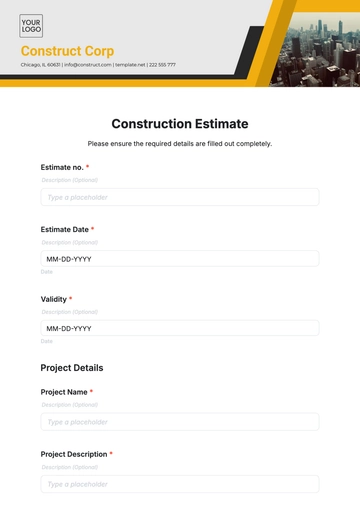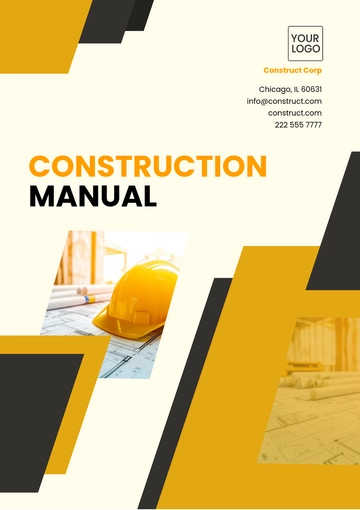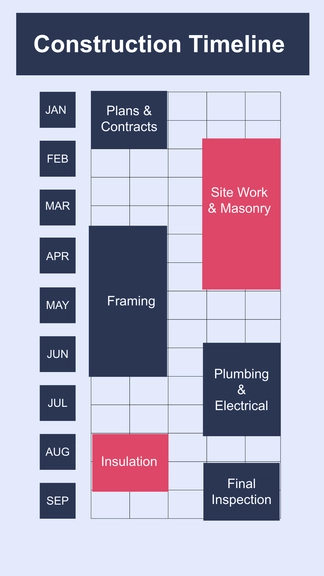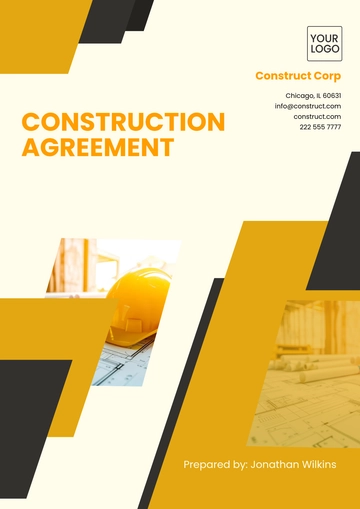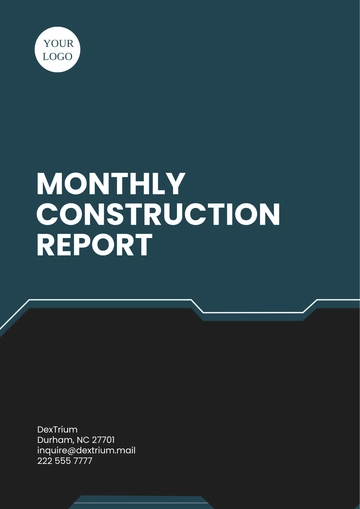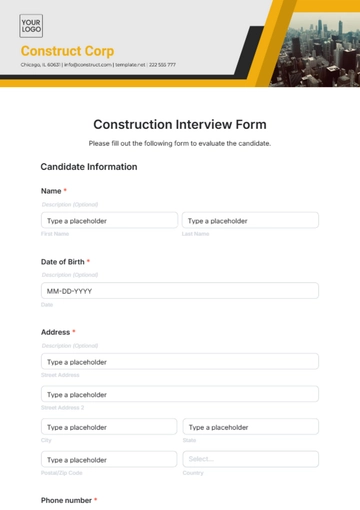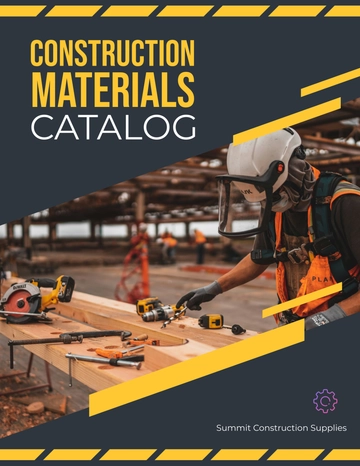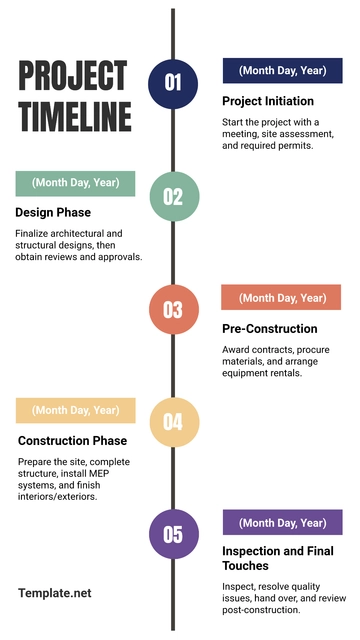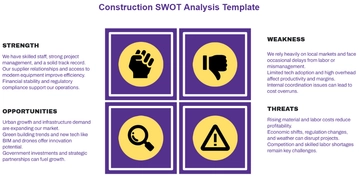Free Church Building Maintenance SOP Format
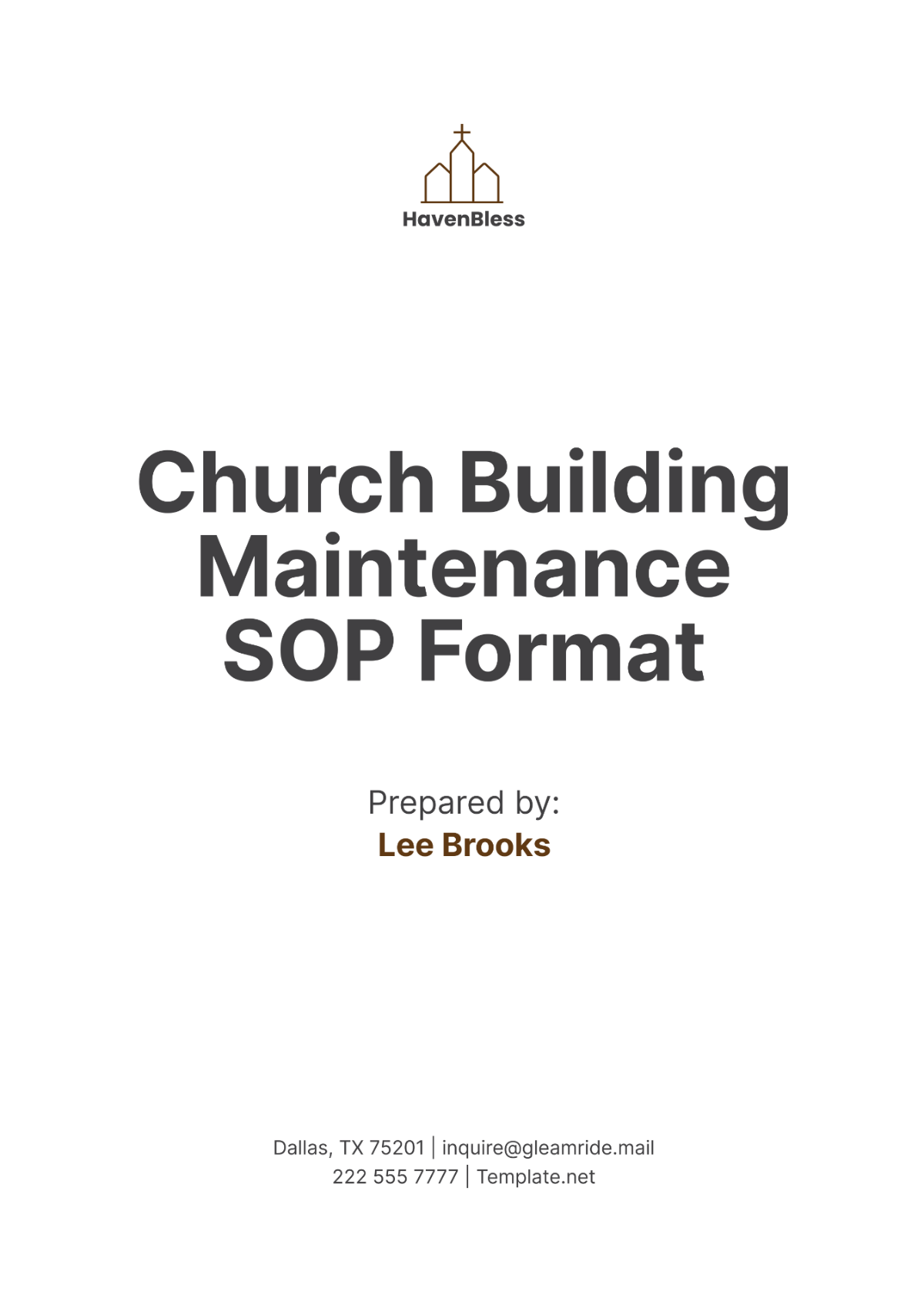
I. Introduction
A. Purpose
Ensure Longevity: The purpose of this Church Building Maintenance SOP is to outline procedures that ensure the longevity and safety of the church building. Regular maintenance is critical for preventing deterioration and costly repairs.
Promote Safety: Maintaining the church building ensures a safe environment for congregants and staff. Proper upkeep minimizes hazards and accidents.
Enhance Appearance: Regular maintenance enhances the appearance of the church, creating a welcoming atmosphere for visitors and members.
B. Scope
Maintenance Activities: This SOP covers all routine and preventative maintenance activities, including cleaning, repairs, and inspections.
Roles and Responsibilities: It details the roles and responsibilities of staff and volunteers involved in maintenance tasks, ensuring clarity and accountability.
Frequency of Tasks: The SOP specifies the frequency of various maintenance tasks, from daily cleaning to annual inspections.
C. Target Audience
Maintenance Staff: This SOP is intended for use by maintenance staff who are directly responsible for the upkeep of the church building.
Volunteers: Volunteers who assist with maintenance tasks will find guidance on procedures and safety protocols.
Church Leadership: Church leaders can use this SOP to oversee maintenance activities and ensure that all tasks are performed correctly and on schedule.
II. Cleaning Procedures
The following table provides an overview of the daily, weekly, and monthly cleaning tasks for the church building:
No. | Task | Description |
|---|---|---|
1 | Daily Cleaning | Includes sweeping, mopping, and trash removal. |
2 | Weekly Cleaning | Involves dusting, vacuuming, and restroom sanitation. |
3 | Monthly Cleaning | Includes deep cleaning of carpets, windows, and fixtures. |
A. Daily Cleaning
Sweeping and Mopping: Sweep and mop all floors daily to maintain cleanliness and prevent dirt buildup. Pay special attention to high-traffic areas.
Trash Removal: Empty all trash bins and replace liners. Dispose of waste in designated areas to avoid unpleasant odors and pests.
Sanitize Surfaces: Wipe down all surfaces, including pews, tables, and doorknobs, with disinfectant to reduce the spread of germs.
Restroom Maintenance: Clean and sanitize restrooms, restock supplies, and ensure all fixtures are functioning properly.
Entrance Area: Keep the entrance area clean and welcoming by removing debris, sweeping the steps, and ensuring mats are clean.
B. Weekly Cleaning
Dusting: Dust all surfaces, including shelves, window sills, and light fixtures, to prevent the accumulation of dust and allergens.
Vacuuming: Vacuum all carpets and rugs thoroughly, paying attention to corners and under furniture to remove dirt and debris.
Restroom Deep Clean: Perform a deep clean of all restrooms, including scrubbing tiles, cleaning grout, and sanitizing fixtures.
Window Cleaning: Clean all windows and mirrors to ensure they are free of smudges and streaks, allowing natural light to brighten the space.
C. Monthly Cleaning
Carpet Deep Cleaning: Use a carpet cleaner to deep clean all carpets, removing stains and refreshing the fibers.
Window Washing: Wash both the interior and exterior of windows to maintain clear visibility and a polished appearance.
Fixture Polishing: Polish all metal fixtures, including door handles and light fixtures, to maintain their shine and prevent tarnish.
High Dusting: Use extendable dusters to clean high areas such as ceiling fans, chandeliers, and air vents that are not reachable during weekly cleaning.
Furniture Maintenance: Check and clean all furniture, ensuring it is in good condition and free from damage or wear.
Regular cleaning is essential for maintaining a healthy and inviting environment in the church. Daily tasks prevent dirt and grime from accumulating, while weekly and monthly tasks address deeper cleaning needs. This structured approach ensures the church remains a clean and welcoming space for all.
III. Repair Procedures
A. Minor Repairs
Identify Issues: Regularly inspect the building for minor repair needs such as loose tiles, leaking faucets, or peeling paint.
Log Repairs: Maintain a log of all minor repairs, including the date, nature of the issue, and the steps taken to fix it. This log helps track recurring problems and plan for future maintenance.
Perform Repairs: Address minor repairs promptly to prevent them from becoming larger, more costly issues. Use appropriate tools and materials for each task.
Verify Completion: After completing a repair, verify that the issue has been fully resolved. Conduct a follow-up inspection if necessary.
Report Major Issues: If a minor repair reveals a more significant problem, report it to church leadership immediately for further assessment and action.
B. Major Repairs
Assessment: When a major repair is needed, conduct a thorough assessment to understand the extent of the damage and the necessary steps for resolution.
Professional Services: For complex or specialized repairs, hire professional services to ensure the job is done correctly and safely.
Budgeting: Develop a budget for major repairs, including cost estimates from contractors and potential funding sources. Secure approval from church leadership if required.
Scheduling: Schedule major repairs at a time that minimizes disruption to church activities. Communicate the schedule to all stakeholders in advance.
Oversight: Monitor the progress of major repairs to ensure they are completed on time and within budget. Address any issues that arise promptly.
IV. Inspection Procedures
The following table provides an overview of the regular inspections required for the church building:
No. | Type | Description |
|---|---|---|
1 | Safety Inspection | Check for hazards such as loose railings and exposed wires. |
2 | Structural Inspection | Assess the integrity of the building’s structure, including walls and roof. |
3 | Equipment Inspection | Ensure all equipment, such as HVAC and electrical systems, is functioning properly. |
4 | Accessibility Inspection | Verify that all areas of the building are accessible to individuals with disabilities. |
A. Safety Inspection
Hazard Identification: Conduct regular inspections to identify potential safety hazards such as loose railings, exposed wires, and slippery floors.
Fire Safety: Check that all fire extinguishers are in place, easily accessible, and fully charged. Test smoke detectors and fire alarms to ensure they are working.
Emergency Exits: Ensure that all emergency exits are clearly marked and free from obstructions. Check that exit signs are illuminated and functioning.
Lighting: Inspect all indoor and outdoor lighting to ensure it is functioning correctly. Replace any burnt-out bulbs or damaged fixtures.
B. Structural Inspection
Wall Integrity: Check for cracks, bulges, or other signs of structural damage in the walls. Address any issues promptly to prevent further deterioration.
Roof Condition: Inspect the roof for leaks, missing shingles, or other damage. Regular roof maintenance prevents water damage and extends the roof’s lifespan.
Foundation Assessment: Examine the foundation for signs of settling, cracks, or water intrusion. A stable foundation is critical for the building’s overall integrity.
Window and Door Frames: Ensure that all window and door frames are in good condition, free from rot, and properly sealed to prevent drafts and moisture.
C. Equipment Inspection
HVAC Systems: Regularly inspect heating, ventilation, and air conditioning systems to ensure they are functioning efficiently. Schedule professional maintenance as needed.
Electrical Systems: Check all electrical panels, outlets, and wiring for signs of wear or damage. Address any issues to prevent electrical hazards.
Plumbing: Inspect plumbing fixtures for leaks, corrosion, or other issues. Regular maintenance of plumbing systems prevents water damage and costly repairs.
Fire Safety Equipment: Ensure that all fire safety equipment, including alarms and extinguishers, is in good working condition and properly maintained.
D. Accessibility Inspection
Entryways: Verify that all entryways are accessible to individuals with disabilities. This includes ramps, handrails, and automatic doors.
Restrooms: Ensure that restrooms are equipped with accessible features such as grab bars, lowered sinks, and wide stalls.
Seating Areas: Check that seating areas include designated spaces for wheelchair users and that these spaces are easily accessible.
Pathways: Inspect all pathways within the church to ensure they are free from obstructions and wide enough for easy navigation.
Regular inspections are crucial for maintaining the safety, integrity, and accessibility of the church building. Identifying and addressing issues promptly prevents minor problems from becoming major concerns and ensures that the church remains a safe and welcoming place for all.
V. Preventative Maintenance
The following table provides an overview of the preventative maintenance tasks for the church building:
No. | Task | Description |
|---|---|---|
1 | HVAC Maintenance | Regularly service heating, ventilation, and air conditioning systems. |
2 | Plumbing Maintenance | Perform routine checks and maintenance on all plumbing systems. |
3 | Electrical Maintenance | Inspect and maintain electrical systems to prevent hazards. |
4 | Roof Maintenance | Conduct regular roof inspections and minor repairs. |
5 | Grounds Maintenance | Maintain landscaping and outdoor areas to enhance curb appeal. |
A. HVAC Maintenance
Filter Replacement: Replace HVAC filters regularly to ensure efficient operation and improve air quality. Dirty filters can strain the system and reduce its lifespan.
System Inspections: Schedule regular inspections of HVAC systems to identify and address any issues before they become serious. Professional inspections can catch problems early.
Duct Cleaning: Clean HVAC ducts periodically to remove dust, debris, and allergens. Clean ducts improve air quality and system efficiency.
Thermostat Calibration: Ensure that thermostats are properly calibrated for accurate temperature control. This helps maintain a comfortable environment and reduces energy costs.
Seasonal Maintenance: Perform seasonal maintenance tasks, such as checking coolant levels in air conditioning units and inspecting heating systems before winter.
B. Plumbing Maintenance
Leak Detection: Regularly check for leaks in all plumbing fixtures and pipes. Early detection of leaks prevents water damage and reduces water waste.
Drain Cleaning: Clean drains and pipes to prevent clogs and ensure efficient drainage. Use appropriate cleaning methods to avoid damaging pipes.
Fixture Maintenance: Inspect and maintain all plumbing fixtures, including faucets, toilets, and water heaters. Address any issues promptly to ensure they function properly.
Water Pressure Check: Monitor and adjust water pressure to optimal levels. High water pressure can damage pipes, while low pressure can affect fixture performance.
C. Electrical Maintenance
Outlet and Switch Inspection: Regularly inspect electrical outlets and switches for signs of wear or damage. Replace any faulty components to prevent electrical hazards.
Wiring Checks: Check all wiring for signs of wear, fraying, or damage. Properly maintained wiring reduces the risk of electrical fires and other hazards.
Panel Maintenance: Ensure that electrical panels are in good condition and free from dust or debris. Tighten any loose connections and replace any damaged components.
Surge Protection: Install and maintain surge protectors to safeguard electrical equipment from power surges. This extends the lifespan of sensitive equipment.
Lighting Maintenance: Regularly inspect and replace lighting fixtures and bulbs. Ensure that emergency lighting is functioning correctly.
D. Roof Maintenance
Shingle Inspection: Inspect roof shingles for damage, wear, or missing pieces. Replace any damaged shingles to prevent leaks and water damage.
Gutter Cleaning: Clean gutters and downspouts regularly to ensure proper drainage. Clogged gutters can cause water to back up and damage the roof.
Flashing Maintenance: Check and maintain roof flashing around chimneys, vents, and other openings. Proper flashing prevents water intrusion.
Attic Inspection: Inspect the attic for signs of leaks, mold, or insulation issues. Address any problems promptly to maintain roof integrity.
Roof Debris Removal: Remove debris such as leaves, branches, and dirt from the roof. Accumulated debris can trap moisture and cause damage.
E. Grounds Maintenance
Lawn Care: Mow the lawn regularly and keep it well-maintained. A neat lawn enhances the church’s curb appeal and provides a pleasant environment.
Tree and Shrub Maintenance: Trim trees and shrubs to prevent overgrowth and maintain a tidy appearance. Regular trimming also reduces the risk of falling branches.
Weed Control: Remove weeds from flower beds, pathways, and other areas. Weeds can detract from the church’s appearance and damage landscaping.
Pathway Maintenance: Inspect and repair pathways to ensure they are safe and free from cracks or uneven surfaces. Well-maintained pathways enhance accessibility.
Seasonal Planting: Plant seasonal flowers and plants to add color and vibrancy to the church grounds. Regular planting keeps the landscaping fresh and appealing.
Preventative maintenance is essential for the long-term care of the church building and its systems. By performing regular maintenance tasks, the church can avoid costly repairs, extend the lifespan of equipment, and ensure a safe and welcoming environment for all.
VI. Emergency Procedures
A. Fire Emergency
Evacuation Plan: Develop and regularly update an evacuation plan. Ensure all staff and volunteers are familiar with the plan and conduct regular drills.
Fire Extinguishers: Install fire extinguishers in key areas and ensure they are easily accessible. Train staff on how to use them effectively.
Fire Alarms: Install and regularly test fire alarms throughout the building. Ensure they are loud enough to alert everyone in the building.
Emergency Exits: Clearly mark all emergency exits and ensure they are free from obstructions. Regularly check that exit doors function properly.
Communication: Establish a clear communication protocol for reporting and responding to fires. Ensure all staff know who to contact in an emergency.
B. Medical Emergency
First Aid Kits: Maintain well-stocked first aid kits in accessible locations. Ensure staff and volunteers know where the kits are and how to use them.
Emergency Response: Train staff and volunteers in basic first aid and CPR. Have a plan for responding to medical emergencies and designate first aid responders.
Medical Contacts: Keep a list of local medical facilities and emergency contacts. Ensure this information is easily accessible to all staff.
Incident Reporting: Establish a procedure for reporting and documenting medical emergencies. This helps in reviewing and improving response protocols.
Follow-Up: After a medical emergency, follow up with the affected individual and their family. Provide support and ensure they receive any necessary medical care.
C. Utility Failure
Power Outage: Have a plan for responding to power outages. Ensure backup generators are available and functioning properly.
Water Supply Issues: Develop a protocol for dealing with water supply interruptions. Ensure bottled water is available for drinking and basic sanitation needs.
Gas Leaks: Establish procedures for detecting and responding to gas leaks. Ensure staff know how to shut off the gas supply and evacuate the building if necessary.
HVAC Failure: Have a plan for dealing with HVAC system failures, especially during extreme weather conditions. Ensure temporary heating or cooling solutions are available.
Communication: Ensure clear communication with utility companies during failures. Keep staff informed of the situation and any steps being taken to resolve it.
D. Security Breach
Intruder Alert: Develop a plan for responding to intruders. Ensure all staff know how to recognize and report suspicious activity.
Lockdown Procedures: Establish lockdown procedures for various scenarios, including active shooter situations. Conduct regular drills to ensure readiness.
Access Control: Implement access control measures to secure the building. This includes locking doors, using key cards, and monitoring entry points.
Security Systems: Install and maintain security systems, including cameras and alarms. Ensure they are regularly tested and functioning properly.
Coordination with Authorities: Maintain regular communication with local law enforcement. Ensure they are familiar with the church’s security protocols and can respond quickly in an emergency.
VII. Documentation and Reporting
A. Maintenance Logs
Daily Logs: Keep daily logs of all maintenance activities. Document the tasks performed, the personnel involved, and any issues encountered.
Inspection Reports: Maintain detailed reports of all inspections conducted. Include findings, recommendations, and follow-up actions.
Repair Records: Document all repairs made, including the nature of the problem, the steps taken to resolve it, and the date of completion.
Preventative Maintenance Records: Keep records of all preventative maintenance tasks performed. This helps track the frequency and effectiveness of maintenance activities.
Emergency Reports: Document all emergency situations and responses. Include a detailed account of the incident, the actions taken, and any lessons learned.
B. Communication Protocol
Internal Communication: Establish clear communication protocols for staff and volunteers. Ensure everyone knows how to report maintenance issues and emergencies.
External Communication: Develop protocols for communicating with external parties, including contractors, utility companies, and emergency services.
Regular Meetings: Hold regular meetings to review maintenance activities, address any issues, and plan for upcoming tasks.
Feedback Mechanism: Implement a feedback mechanism for staff and volunteers to provide input on maintenance procedures and suggest improvements.
C. Compliance
Regulatory Requirements: Ensure all maintenance activities comply with local, state, and federal regulations. Stay informed of any changes to these regulations.
Safety Standards: Adhere to industry safety standards in all maintenance activities. This includes using appropriate safety equipment and following best practices.
Documentation Review: Regularly review maintenance documentation to ensure accuracy and completeness. Update records as needed to reflect current practices.
D. Inventory Management
Supply Tracking: Maintain an inventory of all maintenance supplies and equipment. Track usage and reorder items as needed to ensure adequate stock.
Equipment Maintenance: Keep records of all equipment maintenance and repairs. Regularly inspect and service equipment to ensure it is in good working condition.
Vendor Management: Develop relationships with reliable vendors for maintenance supplies and services. Ensure vendors meet quality and pricing standards.
E. Budgeting
Annual Budget: Develop an annual budget for maintenance activities. Include projected costs for routine tasks, repairs, and unexpected expenses.
Expense Tracking: Track all maintenance-related expenses and compare them to the budget. Adjust spending as needed to stay within budget limits.
Funding Requests: Submit funding requests to church leadership for major repairs or projects. Provide detailed cost estimates and justifications.
VIII. Training and Development
A. Staff Training
Initial Training: Provide comprehensive training for new maintenance staff. Cover all procedures, safety protocols, and emergency procedures.
Ongoing Training: Offer regular training sessions to update staff on new procedures, equipment, and best practices. This helps maintain a high level of competency.
Specialized Training: Provide specialized training for tasks that require specific skills or knowledge. This includes HVAC maintenance, electrical repairs, and plumbing.
Safety Training: Emphasize safety in all training sessions. Ensure staff are familiar with safety equipment, procedures, and emergency protocols.
Performance Evaluation: Conduct regular performance evaluations to identify areas for improvement and provide feedback to staff.
B. Volunteer Training
Orientation: Offer orientation sessions for new volunteers. Introduce them to the church building, maintenance procedures, and safety protocols.
Task-Specific Training: Provide training for specific tasks volunteers will perform. Ensure they are comfortable and confident in their roles.
Safety Briefings: Conduct regular safety briefings for volunteers. Emphasize the importance of following safety procedures and using protective equipment.
Supervision: Assign experienced staff to supervise volunteers. Provide guidance and support to ensure tasks are performed correctly and safely.
C. Professional Development
Workshops and Seminars: Encourage staff to attend workshops and seminars on maintenance and facility management. This helps them stay current with industry trends and best practices.
Certification Programs: Support staff in pursuing certification programs related to maintenance and safety. Certified staff bring valuable skills and knowledge to the team.
Peer Learning: Foster a culture of peer learning and collaboration. Encourage staff to share knowledge and experiences to improve overall performance.
D. Training Materials
Manuals and Guides: Develop comprehensive training manuals and guides. These should cover all maintenance procedures, safety protocols, and emergency responses.
Online Resources: Provide access to online resources, including videos, articles, and forums. Online resources can supplement in-person training and provide ongoing learning opportunities.
Training Records: Maintain records of all training sessions attended by staff and volunteers. This helps track progress and identify areas for further development.
E. Evaluation and Feedback
Training Evaluation: Evaluate the effectiveness of training programs regularly. Gather feedback from participants and make necessary improvements.
Skill Assessments: Conduct skill assessments to ensure staff and volunteers have mastered the necessary competencies. Use assessments to identify training needs.
Continuous Improvement: Foster a culture of continuous improvement. Encourage staff and volunteers to seek out new learning opportunities and apply their knowledge to improve maintenance activities.
IX. Review and Update
A. Review
This Church Building Maintenance SOP will be reviewed annually or as needed to ensure it remains current and effective. Regular reviews help identify areas for improvement and ensure compliance with new regulations and best practices. During the review process, feedback will be solicited from staff, volunteers, and church leadership to incorporate their input and make meaningful updates. Performance metrics, such as the frequency of repairs, the cost of maintenance, and safety incidents, will be used to evaluate the effectiveness of maintenance procedures. Benchmarking against industry standards will also be conducted to identify areas where improvements can be made.
B. Update
Updates to SOP will be made as needed to reflect changes in equipment, technology, or regulations. All updates will be clearly documented and communicated to all stakeholders, with additional training provided as necessary. Safety protocols will be reviewed and updated regularly to ensure they remain effective and incorporate new safety standards and best practices. The inventory of equipment and supplies will be regularly reviewed and updated to ensure all items are in good condition, replacing any outdated or damaged items. Continuous improvement will be encouraged, fostering a culture where staff and volunteers can provide feedback and suggest improvements to maintenance procedures.
- 100% Customizable, free editor
- Access 1 Million+ Templates, photo’s & graphics
- Download or share as a template
- Click and replace photos, graphics, text, backgrounds
- Resize, crop, AI write & more
- Access advanced editor
Optimize maintenance tasks with our Church Building Maintenance SOP Format Template from Template.net! This template includes editable sections to tailor the SOP to your needs. Customizable fields and the AI Editor Tool ensures efficient and accurate creation, providing a detailed SOP for maintaining your church building. Access it right now!
You may also like
- Construction Bid Proposal
- Construction Business Card
- Construction Business Plan
- Construction Certificate
- Flyers Construction
- Construction ID Card
- Construction Letter
- Construction Letterhead
- Construction Poster
- Construction Presentation
- Construction Profile
- Construction Checklist
- Construction Quotation
- Construction Receipt
- Construction Report
- Construction Sign
- Construction Plan
- Construction Logo
- Construction Agreement
- Construction Form
- Construction Brochure
- Construction Contract
- Construction Proposal
- Construction Sheet
- Construction Budget
- Construction Schedule
- Construction Meeting Minute
- Construction Banner
- Construction Estimate
- Construction Policy
- Construction Invoice
- Construction Request for Quotation (RFQ)






